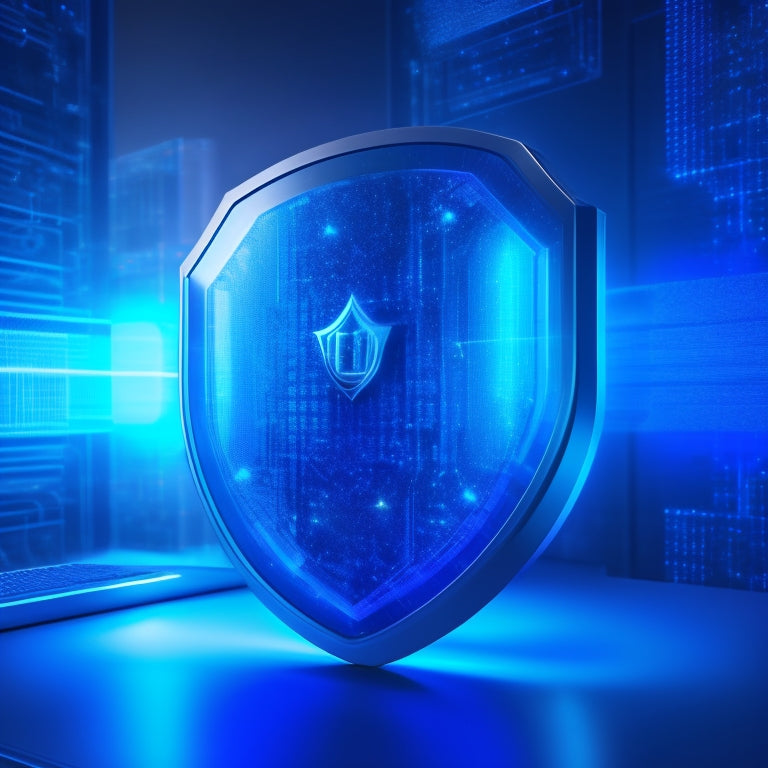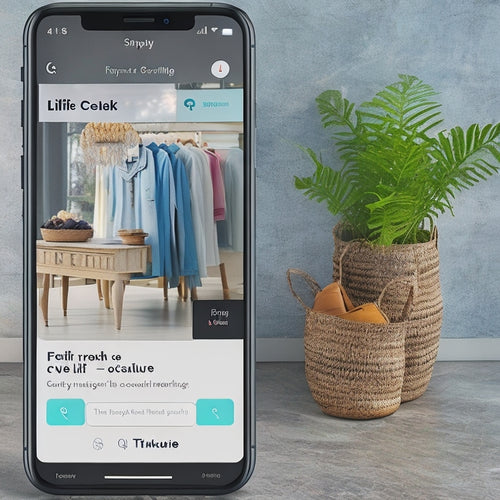
Safeguarding Online Learning: 3 Essential Security Features
Share
As you safeguard your online learning environment, you need to prioritize three essential security features. First, secure authentication and authorization guarantee only authorized users access your platform, with multi-factor authentication providing an extra layer of defense. Second, robust data encryption and backup mechanisms protect your data in transit and at rest, with regular updates and secure cloud storage. Third, a real-time threat detection and response system monitors online activities, identifying and responding to threats promptly. By implementing these features, you'll be well on your way to a secure online learning environment - and there's more to explore to guarantee your platform's integrity.
Key Takeaways
• Implementing multi-factor authentication (MFA) ensures that only authorized users access online learning platforms and resources.
• Robust encryption mechanisms protect data in transit and at rest, safeguarding sensitive information from unauthorized access.
• Real-time threat detection and response systems monitor online activities, identifying and responding to security threats promptly.
• Regular data backups and quick restoration capabilities ensure business continuity and minimize data loss in case of system failures.
• Cybersecurity training and awareness programs educate users on online safety best practices, fostering a secure online learning environment.
Secure Authentication and Authorization
What makes secure authentication and authorization important in online learning is the need to guarantee that only authorized users, namely you and other legitimate learners, access sensitive educational resources and personal data.
Without robust security measures, your online learning experience is vulnerable to data breaches, identity theft, and unauthorized access.
Multi-factor authentication (MFA) is a pivotal layer of defense, requiring you to provide additional verification, such as a fingerprint or one-time password, beyond just a username and password. This greatly reduces the risk of unauthorized access, ensuring that only you can access your account.
Moreover, user permissions play a crucial role in controlling access to specific resources and data. By assigning specific roles and permissions, administrators can make sure that you, as a learner, only have access to the resources and data necessary for your learning journey. This detailed control prevents unauthorized access and minimizes the attack surface.
With secure authentication and authorization in place, you can focus on learning, knowing that your data and resources are protected from unauthorized access.
Data Encryption and Backup
As you access authorized resources, your online learning platform confirms that your data remains protected in transit and at rest through robust encryption mechanisms, safeguarding your sensitive information from interception and unauthorized access. This confirms that even if cyber attacks occur, your data remains secure.
Your online learning platform stores your data in a secure cloud storage environment, where it's encrypted and backed up regularly. This means that in the event of a data loss or system failure, your platform can quickly restore your data from the backups, minimizing downtime and ensuring business continuity.
The encryption mechanisms used by your online learning platform are regularly updated and patched to prevent exploitation by cyber attackers. You can rest assured that your data is protected by the latest security protocols, giving you peace of mind as you focus on your online learning journey.
With robust data encryption and backup mechanisms in place, you can trust that your online learning platform has your back, protecting your sensitive information from unauthorized access and cyber threats.
Real-time Threat Detection and Response
Your online learning platform's strong threat detection system continuously monitors your online activities, identifying and responding to potential security threats in real-time to guarantee your safety and security. This proactive defense guarantees that you can focus on learning without worrying about cyber threats.
The system's incident monitoring capabilities allow it to detect and respond to threats quickly, minimizing the risk of data breaches or other security incidents.
To enhance your online learning experience, the platform also provides cybersecurity training and awareness outreach programs. These programs educate you on how to identify and report suspicious activities, reducing the likelihood of security breaches.
By staying informed and vigilant, you can play an active role in maintaining the security of your online learning environment.
With real-time threat detection and response, you can have confidence that your online learning platform is secure and protected. This allows you to focus on achieving your educational goals, knowing that your personal data and online activities are safeguarded.
Frequently Asked Questions
How Do I Ensure Student Data Privacy in Online Learning Platforms?
While convenience tempts you to overlook security, don't compromise - you must prioritize student data privacy. Make sure you're using platforms with robust privacy settings, encryption protocols, user authentication, and data encryption to safeguard sensitive information.
What Are the Consequences of a Data Breach in E-Learning?
If a data breach occurs in your e-learning platform, you'll face financial repercussions from lawsuits and fines, plus reputational damage that can erode student trust and ultimately, your institution's credibility.
Can Online Learning Platforms Be Hacked by Unauthorized Users?
You need to know that online learning platforms can be hacked if you don't implement robust cybersecurity measures, such as strong user authentication, encryption protocols, and reliable firewall protection to safeguard your sensitive data.
Are Cloud-Based Learning Platforms More Secure Than On-Premise Ones?
You might think cloud-based learning platforms are less secure, but they're not - they actually offer robust cybersecurity measures, including data encryption, and regular vulnerability assessments and penetration testing to guarantee your data remains safe.
How Often Should Online Learning Platforms Be Updated for Security Patches?
You should update online learning platforms regularly, ideally after conducting a thorough security audit every 6-12 months and vulnerability assessments every 3-6 months, to guarantee timely security patches and minimize exposure to threats.
Related Posts
-
Sitemap Shopify: The Comprehensive Guide
This article aims to provide a comprehensive guide on Sitemap Shopify. It will focus on its benefits, tips for optim...
-

Shopify: The Ultimate E-commerce Solution
Shopify, an e-commerce platform, offers numerous advantages for businesses seeking to establish an online presence. ...
-

Setting Up TikTok Storefront on Shopify: A Guide
The integration of social media platforms and e-commerce has become increasingly prevalent in the digital marketplac...

